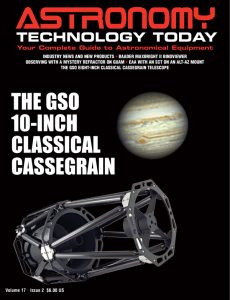The ImPPG Image Post Processing Software performs Lucy-Richardson deconvolution, unsharp masking, brightness normalization and tone curve adjustment. It can also apply previously specified processing settings to multiple images. All operations are performed using 32-bitfloating-point arithmetic.
 A new version of the software, V1.9.0-beta, has recently been released with new features including improved scripting support and RGB processing. ImPPG supports the following inputs formats: FITS, BMP, JPEG, PNG, TIFF (most of bit depths and compression methods), TGA and more. Images are processed in grayscale and can be saved as: BMP 8-bit; PNG 8-bit; TIFF 8-bit, 16-bit, 32-bit floating-point (no compression, LZW- or ZIP-compressed), FITS 8-bit, 16-bit, 32-bit floating-point.
A new version of the software, V1.9.0-beta, has recently been released with new features including improved scripting support and RGB processing. ImPPG supports the following inputs formats: FITS, BMP, JPEG, PNG, TIFF (most of bit depths and compression methods), TGA and more. Images are processed in grayscale and can be saved as: BMP 8-bit; PNG 8-bit; TIFF 8-bit, 16-bit, 32-bit floating-point (no compression, LZW- or ZIP-compressed), FITS 8-bit, 16-bit, 32-bit floating-point.
ImPPG can also align an image sequence, with possibly large and chaotic translations between images (aligned output images preserve number of channels and bit depth). This can be useful, for example, when preparing a solar time-lapse animation, where subsequent frames are offset due to inaccurate tracking of the telescope mount. Other possible applications are smoothing out of terrestrial landscape time-lapses or preparing raw frames (with serious image jitter) for stacking.
The ImPPG Image Post Processing Software is free and open-source, licensed under GNU GPL v3 (or later Building from source code (C++) requires Boost, wxWidgets and (optionally) FreeImage & CFITSIO libraries and is possible on multiple platforms. Windows executables (32- and 64-bit) can also be downloaded. You can learn more here.

 And to make it easier for you to get the most extensive news, articles and reviews that are only available in the magazine pages of Astronomy Technology Today, we are offering a 1-year magazine subscription for only $6! Or, for an even better deal, we are offering 2 years for only $9. Click here to get these deals which only will be available for a very limited time. You can also check out a free sample issue here.
And to make it easier for you to get the most extensive news, articles and reviews that are only available in the magazine pages of Astronomy Technology Today, we are offering a 1-year magazine subscription for only $6! Or, for an even better deal, we are offering 2 years for only $9. Click here to get these deals which only will be available for a very limited time. You can also check out a free sample issue here.
The sun is more active than it has been in years! If you’d like to learn more the technology behind solar observing, solar imaging and more, you can check out our free publication, “The Definitive Guide to Viewing and Imaging the Sun”. You don’t have to sign up or provide any information, simply click here and enjoy reading!

